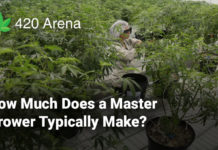Growing plants outdoors is simpler when compared to growing them indoors. When you grow them outdoors, you are basically leaving them largely to the mercy of nature as the natural air, sunlight and soil play a major role here. However, when you grow your plants indoors, you need to recreate all these environmental factors. While this can be quite a challenge, you can also use it to your benefit as you can control all these artificially created factors. In this article, we shall be taking a closer look at two kinds of lights – Metal Halides (MH) vs High-Pressure Sodium (HPS) Grow Lights. Both these lights are similar in how they operate but different in the ways the growers use them.
There’s a lot of confusion among growers when it comes to the different kinds of grow lights that they have and HPS vs MH Grow lights is something that always confuses a lot of beginners. This is why we have decided to come out with this article where we shall explain to you the functioning of both these types of grow lights, when to use which light, how each of them operate, as well as a buyer’s guide for these kind of lights. Besides this, we shall also be talking about grow lights and the need for using them in general so that you get a broader understanding of the topic.
Why Do Indoor Growers Need Grow Lights?
To understand why indoor growers need grow lights, you first need to understand why growers need lighting in the first place. Light is among the most important natural elements that a plant needs. It is based on how much light the plant gets in different stages that the overall growth and development of the plant depends. As a young seedling, it needs a lot of light – sometimes as much as 20 to 22 hours of lighting. At this early stage, the sunlight helps the plants grow taller and stronger. Over time, the function of the sunlight changes – in the vegetative phase of growth, light helps plants develop leaves and sustain the leaves with the help of the process of ‘photosynthesis’ where sunlight is converted into energy.
This process helps the plants generate various sugars and enzymes and break them down which helps power them through various stages of their growth. Sunlight is also responsible to trigger the opening and closing of the stomata of the plants that helps them ‘breathe’. Besides this, sunlight helps the plants enter into the flowering stage from the pre-flowering stage when the lighting hours are reduced. Using the right kind of light also ensures that the flowers are blooming well. Furthermore, the light also plays a role in developing the flavour and the aroma of the plants, as well as helps them develop better and stronger roots and space out the branches. These are just a few functions that light plays but enough for anyone to understand how it is critical for any grower!
What Are The Different Kinds of Grow Lights
There are a large number of options available to growers who are looking forward to buying a grow light. These grow lights come in different shapes and sizes and function in different ways based on their system. Some of these grow lights can be used by growers across all phases of the plant’s growth cycle while some of them are phase-specific. Let us take a closer look at all these different kinds of indoor lighting options –
1. High-Intensity Discharge Grow Lights
High-Intensity Discharge grow lights (commonly known as HID lights), as the name suggests, provide your plants with a large amount of quite bright lights. These grow lights function on the basis of an electric arc passing through a gas which results in the gas getting illuminated and creating the light. These lights require a ballast to operate because the ballast controls the flow of electricity and ensure that not too much current flows in that might lead to bursting the bulb. There are two types of HID grow lights, and this is the main topic of our article today – these are HPS grow lights and MH grow lights.
- Metal Halide Grow Lights:
These lights are great for early-stage plants as they emit a cool blue shade of the visible spectrum which helps the plants grow in size and generate more leaves and develop more foliage in general. Blue light is easily absorbed by chloroplasts in the cells and helps the plants generate more chlorophyll as well. These lights are also used during the later stages by some growers but at lower intensities along with red HPS lights.
These grow lights are used by growers during the flowering stage of the plant’s life cycle. Most growers introduce the High-Pressure Sodium lights during pre-flowering phases and bring them to full intensity when flowering begins. The red light that comes from these lights helps the plants get bigger and better flowers and increase the overall yield as well.
2. Fluorescent Grow Lights:
These grow lights usually have a phosphor coating present in the bulb along with mercury vapor and when an electric current is passed through these bulbs, the grow light would emit short-wave ultraviolet light and the property of fluorescence would be achieved with the help of the phosphor coating which helps the lamps to glow properly. There are two variants of this grow light – warm white and cool white for the flowering and vegetative phases respectively. Fluorescent grow lights are low-energy and low-pressure lights compared to HPS/MH lights. These lights also operate at cooler temperatures and need reflectors and ballasts – an elaborate setup to function.
3. LED Grow Lights
The third and last type of grow lights, these are the latest type of grow lights in the markets which are preferred by most modern-day growers. LED grow lights consume the least power of all of these grow lights, tend to heat up the least, as well as offer the most lumen per watt ratio in terms of power consumption. Furthermore, these grow lights don’t carry any chemicals inside them and are hence safer to use as well as safer to dispose. LED lights come in various form factors and of late, a number of innovations over the standard LED grow lights have come forward. There are SMD LED lights (normal LED lights), then there are COB LED lights, LED light strips, etc. They all function on diodes as the basic emitter of light. These lights usually offer a full-spectrum lighting experience, which means you can use the same unit during both the phases of your plant’s growth cycle and you don’t have to change the light every now and then.
Understanding Metal Halides (MH) Grow Lights:
Coming straight to our main topic at hand, let us now understand what Metal Halides are. These are a type of High-Intensity Discharge (HID) grow lights, which offer bright lighting that helps indoor plants grow. When you look at the light that comes from MH lamps, you would find it to be more ‘natural’ looking than other kinds of lights. This light is closer to what sunlight looks during mid-day. These grow lamps function in the bluer-end of the spectrum of visible light. In this section we take a closer look at how these grow lights function and when is the right time for a grower to make use of them:
- How Do Metal Halides Function?
Inside a Metal Halide lamp you would normally find Noble gases such as argon or xenon, mercury vapor. Along with these gases, there is also the presence of certain metal halides such as sodium iodide. When you pass an electric arc through these gases, you are forcing them to ionize. When these lights get ionized, they produce a certain kind of light – Argon is usually the first one to get ionized followed by the halides. Like all HID lights, Metal Halides require a ballast to control the flow of current. It is the presence of the halides that gives the light that comes from these lamps a bluish tinge.
- When To Use MH Grow Lights?
Metal Halide grow lights are meant to be used when the plant you are growing is in the early stages of growth. During the vegetative phase, a marijuana plant requires bluer shades of lighting which help the plant become leafier and grow more foliage. These lights are important for photosynthesis as well as for the generation of chlorophyll and this is the reason as to why you should use metal halide grow lights during the first half of your plant’s growth cycle.
Understanding High-Pressure Sodium Grow Lights:
High-Pressure Sodium (HPS) grow lights are the exact opposite of what we have seen in Metal Halides in terms of color and performance. However, when it comes to functioning, they work on a similar principle. These grow lights emit reddish lights which are more beneficial during the flowering phase of the marijuana plant’s growth cycle. Let us take a detailed look at how this grow lamp functions and when exactly are you supposed to use these lights:
- How Do HPS Grow Lights Function?
High-Pressure Sodium grow lights, just like Metal Halides, carry some Noble gases inside them. The primary gas here is usually Xenon. Similar to how MH lights have halides along with the primary gas, here you would find a mixture of sodium vapor and mercury which adds to the reddish tint of the light. When an electric current is passed through both of these components iodize – xenon first and then the mixture and produce a reddish light which is beneficial for flowering plants. This grow light too requires a ballast so that the flow of current can be controlled.
- When To Use HPS Grow Lights?
HPS grow lights are to be used during the flowering phase of the marijuana plant’s life cycle. You should start them off along with the blue lights once the plant begins to enter the pre-flowering stage and buds begin to emerge. The intensity of these lights can be increased once the flowering is triggered. Flowering can be manually triggered in non-autoflowering plants by reducing the timings of the light from 12-14 hours to about 10-12 hours. Red lights that come from the HPS grow light help the plants develop bigger and better flowers and increase the overall yield per square foot.
Difference Between Metal Halide (MH) vs HPS Grow Light Bulbs
When it comes to the functioning of these two bulbs, the MH grow lights and HPS grow light bulbs function on pretty much the same principle of an electric arc being passed through some gases. However, there are a number of differences between the two as well. Here, we take a quick look at all the things that are different about these two grow lights.
First off, the color and the spectrum at which they operate are very different. One look at the lights and you can tell that the Metal Halide (MH) grow lights function at the bluer end of the color spectrum while the High-Pressure Sodium (HPS) lights function towards the other end – and have a reddish light. The kind of gases present inside the two bulbs remains the same but the extra element is what gives them the different colors. While Noble gases such as Argon or Xenon form the primary element which is ionized, the secondary element in MH lamps are metal halides such as sodium iodide while the HPS lamps carry sodium vapor mixed with mercury which give them a different sort of a color.
Since the light that comes out of the two grow lamps is different in colour, the function of the light is also quite different – Metal Halides are useful during the vegetative phase, while HPS lights are more useful during the flowering stage of the marijuana plant’s life cycle. Lastly, Metal Halide grow lights usually tend to last for a longer period of time when compared to HPS grow lights.
Buyer’s Guide: How To Choose The Best HID Grow Lights For Your Plants?
Here’s a quick look at everything you need to know before you purchase an HID grow light – be it a Metal Halide or be it a High-Pressure Sodium grow light for your plants. Going through this buyer’s guide will help you prepare a checklist for when you go out in the markets to purchase the light of your choice:
1. Phase of Growth of Your Plant
Growers generally buy both the bulbs together. However, in case you are looking for a specialized light, you need to know that the kind of light you buy depends upon the phase of growth that your plants are in. When your plants are in their first half of their growth cycle you will need to make use of the MH bulbs while HPS bulbs are for the second half. Buy your bulbs accordingly.
2. Power Consumption
Make sure you know the exact amount of power that these bulbs will consume from the wall socket before you buy them. We strongly recommend our readers to check the details of the product and not to go by the wattage offered on the name of the product. The wattage on the name is never really the amount of power that they draw from the socket. The watt per lumen ratio in HID lights is generally higher when compared to LED grow lights.
3. Understanding the Heat Dissipation System
While there’s no such thing as “heat dissipation” in these HID lights, you need to know if your bulbs heat up – and if so, how much. You must try to get a bulb which operates at as lesser temperatures as possible. If your bulb heats up too much you would need to get hold of fans that will propel the air out of the grow tent and keep the temperatures cool.
4. Design and Durability
One of the biggest problem with HPS and MH grow lights is the fact that they are not as strong or durable when compared to other forms of grow lights. These bulbs are not only very fragile but also toxic due to the chemicals present inside them. Hence you must make sure that the ones you are buying are not cheap ones that make use of thin glass but ones which would last you for a long time.
5. Coverage Offered
The amount of area that the bulb of your choice covers is also very important. This along with the wattage must be considered before you make a final purchase. You might want to add-on reflectors or other similar items to ensure that the bulb covers as much area as possible.
6. Cost, Warranty, and Delivery
The cost of the bulb and the warranty you get on it are quite important. The bulb must be in your budget while it must also be under a warranty in case something goes wrong. You must also check for the lifespan that the manufacturer promises. Try and get a grow light that can last you for the longest possible time. Delivery is usually safe and fast when you do it via Amazon.
Frequently Asked Questions About MH Grow Lights and HPS Grow Lights:
Here are the answers to some of the most common and frequently asked questions that we get from our readers about HPS and MH grow lights. We have put them together under this section so that they might solve some of your doubts and queries as well.
1. Are LED Grow Lights Better than HID Grow Lights?
Well, the answer to this question varies from grower to grower based on their comfort, but the objective truth is – yes. LED lights are better than HID grow lights because of a number of reasons. First off, they are way more energy-efficient and provide brighter lighting at the same (or lesser) power consumption. Furthermore, LED lights do not carry any chemicals inside them and are safe to use. Then they don’t even generate as much heat as your standard HID light does. Besides all of this, LED lights can last for a much longer period of time – sometimes as many as 100,000 hours or even more! All of this put together makes them a more superior kind of a lighting solution in comparison.
2. When To Use Which Light?
As mentioned above, MH lights are more suited for plants during the vegetative stage while the reddish HPS grow lights are better suited for the flowering/blooming stage of the plant’s life cycle.
3. How Much Do These Lights Last?
Depending on the manufacturer to manufacture and from bulb to bulb, HID lights generally last you somewhere between 10,000 to 18,000 hours on an average. Metal Halides usually last a little longer when compared to HPS grow lights.
4. Where Can I Buy HID Grow Lights?
HID grow lights can be purchased in practically any store that sells gardening supplies. Amazon, however, is perhaps the best portal for growers to purchase HPS grow lights and MH grow lights as you get the largest collection with the lowest prices and the fastest delivery there!
Conclusion
In conclusion, we can only say that we hope this article has helped solve the MH vs HPS grow lights confusion that many growers have. Metal Halide grow lights as well as High-Pressure Sodium lights are both important for growers when it comes to growing marijuana as well as other plants. Both of these lights have a large number of similarities and differences but when they come together they function really well with each other. These lights can help you provide an all-round growth to your plants. Even in times when LED grow lights are taking the mantle forward, HPS and MH lamps are still pretty popular among growers. We hope that we have helped you understand these grow lights in a more comprehensive manner. If there are any more questions or confusions, feel free to send us a mail or let us know in the comments below and we shall get back to you as soon as possible! Till then…
…Happy Growing! 🙂
Table of Contents



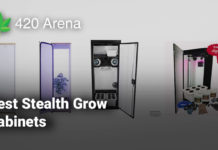
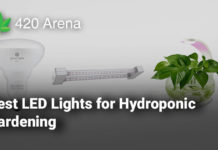

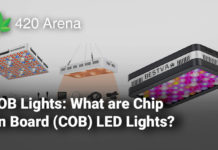

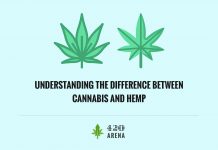

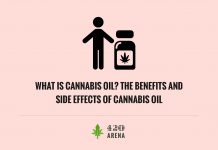


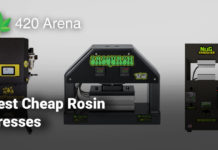

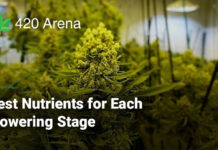
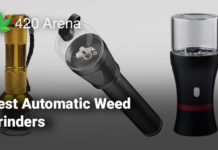
![How to Use Carbon Filters in Your Grow Room [7 Best Carbon Filters for Grow Rooms in 2021] How to Use Carbon Filters in Your Grow Room](https://420arena.com/wp-content/uploads/2020/12/How-to-Use-Carbon-Filters-in-Your-Grow-Room-218x150.jpg)

